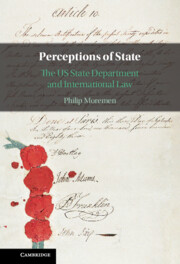77 results
40 - Executive Rulemaking
- from Part III. B - The Executive
-
-
- Book:
- The Cambridge Handbook of Constitutional Theory
- Published online:
- 27 March 2025
- Print publication:
- 24 April 2025, pp 698-719
-
- Chapter
- Export citation
Challenger entry and electoral accountability
-
- Journal:
- Political Science Research and Methods , First View
- Published online by Cambridge University Press:
- 26 March 2025, pp. 1-19
-
- Article
-
- You have access
- Open access
- HTML
- Export citation
10 - Conclusion
-
- Book:
- Pursuing Institutional Purpose
- Published online:
- 19 December 2024
- Print publication:
- 27 February 2025, pp 160-172
-
- Chapter
-
- You have access
- Open access
- HTML
- Export citation
The drivers of multilevel governance as a mode of policymaking: the case of asylum-seekers' reception in Italy
-
- Journal:
- Italian Political Science Review / Rivista Italiana di Scienza Politica , First View
- Published online by Cambridge University Press:
- 27 December 2024, pp. 1-15
-
- Article
-
- You have access
- Open access
- HTML
- Export citation
The thrive for a new heritage ethos in Peru?: The Qhapaq Ñan’s policymaking and the ethics of community participation
-
- Journal:
- International Journal of Cultural Property , First View
- Published online by Cambridge University Press:
- 19 December 2024, pp. 1-21
-
- Article
-
- You have access
- Open access
- HTML
- Export citation
The Role of Epistemic Communities in Formulating EU Policy: The PrecisionTox Project
-
- Journal:
- Transnational Environmental Law / Volume 14 / Issue 1 / March 2025
- Published online by Cambridge University Press:
- 18 December 2024, pp. 198-223
-
- Article
-
- You have access
- Open access
- HTML
- Export citation
Expertise and Responsiveness in People's Political Consultative Conferences
-
- Journal:
- The China Quarterly , First View
- Published online by Cambridge University Press:
- 11 December 2024, pp. 1-18
-
- Article
-
- You have access
- Open access
- HTML
- Export citation
Electronic referral system policy analysis: a qualitative study in the context of Iran
-
- Journal:
- Primary Health Care Research & Development / Volume 25 / 2024
- Published online by Cambridge University Press:
- 17 October 2024, e45
-
- Article
-
- You have access
- Open access
- HTML
- Export citation
The Influence of the Benefit–Cost Analysis on Policy Evaluation in the European Union
-
- Journal:
- Journal of Benefit-Cost Analysis / Volume 15 / Issue 1 / Spring 2024
- Published online by Cambridge University Press:
- 12 September 2024, pp. 128-141
-
- Article
-
- You have access
- HTML
- Export citation
Taxation without Indemnification
- Part of
-
- Journal:
- Modern American History / Volume 7 / Issue 2 / July 2024
- Published online by Cambridge University Press:
- 09 September 2024, pp. 329-331
-
- Article
-
- You have access
- Open access
- HTML
- Export citation
7 - Are Policymakers Solving Problems or Imposing Values?
-
- Book:
- Polarized by Degrees
- Published online:
- 05 September 2024
- Print publication:
- 05 September 2024, pp 241-278
-
- Chapter
- Export citation
Chapter 16 - Translating Evidence to Policy
- from Section 4 - Translations in Policy and Practice
-
-
- Book:
- The Handbook of DOHaD and Society
- Published online:
- 20 June 2024
- Print publication:
- 27 June 2024, pp 185-193
-
- Chapter
-
- You have access
- Open access
- HTML
- Export citation
5 - The Role of International Law in State Department Policymaking
-
- Book:
- Perceptions of State
- Published online:
- 07 June 2024
- Print publication:
- 27 June 2024, pp 155-196
-
- Chapter
- Export citation

Perceptions of State
- The US State Department and International Law
-
- Published online:
- 07 June 2024
- Print publication:
- 27 June 2024
4 - The Interagency Foreign Policy Process
-
-
- Book:
- Diplomatic Tradecraft
- Published online:
- 15 March 2024
- Print publication:
- 28 March 2024, pp 78-99
-
- Chapter
- Export citation
2 - Theoretical Framework
- from Part I - The Refugee Crisis in the EU and Its Member States: Our Approach in Context
-
- Book:
- Coming to Terms with the European Refugee Crisis
- Published online:
- 04 February 2024
- Print publication:
- 08 February 2024, pp 19-39
-
- Chapter
-
- You have access
- Open access
- HTML
- Export citation
Integrating data, knowledge, and expertise for policy advice: understanding the practices of Dutch organized crime control professionals
-
- Journal:
- Data & Policy / Volume 6 / 2024
- Published online by Cambridge University Press:
- 25 January 2024, e4
-
- Article
-
- You have access
- Open access
- HTML
- Export citation
2 - Setting the Policy Boundaries of the Violence Against Women Act
-
- Book:
- Intersectional Advocacy
- Published online:
- 05 January 2024
- Print publication:
- 04 January 2024, pp 46-68
-
- Chapter
- Export citation
3 - Reconfiguring the Violence Against Women Act
-
- Book:
- Intersectional Advocacy
- Published online:
- 05 January 2024
- Print publication:
- 04 January 2024, pp 69-104
-
- Chapter
- Export citation
7 - The Challenges and Possibilities Ahead
-
- Book:
- Intersectional Advocacy
- Published online:
- 05 January 2024
- Print publication:
- 04 January 2024, pp 210-227
-
- Chapter
- Export citation


